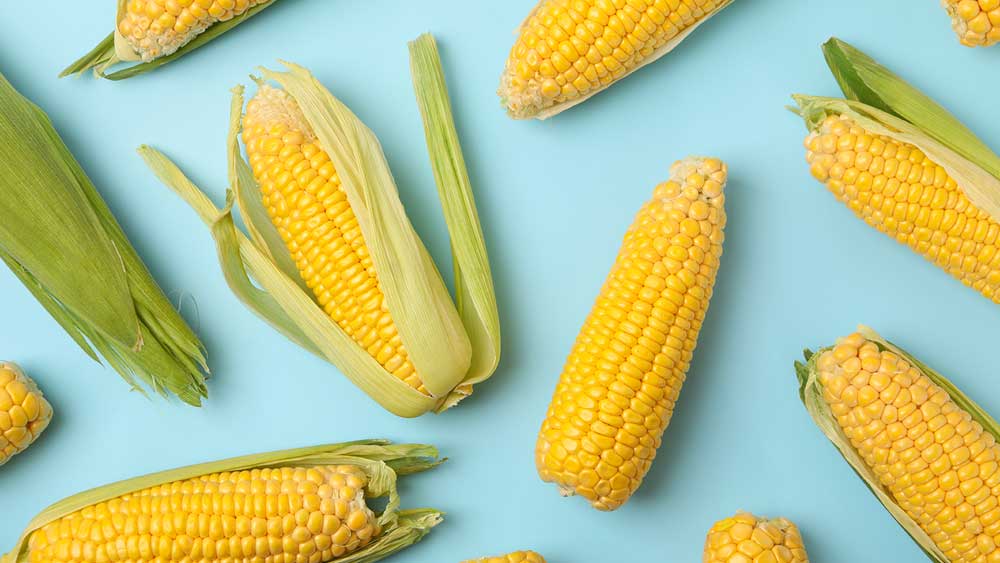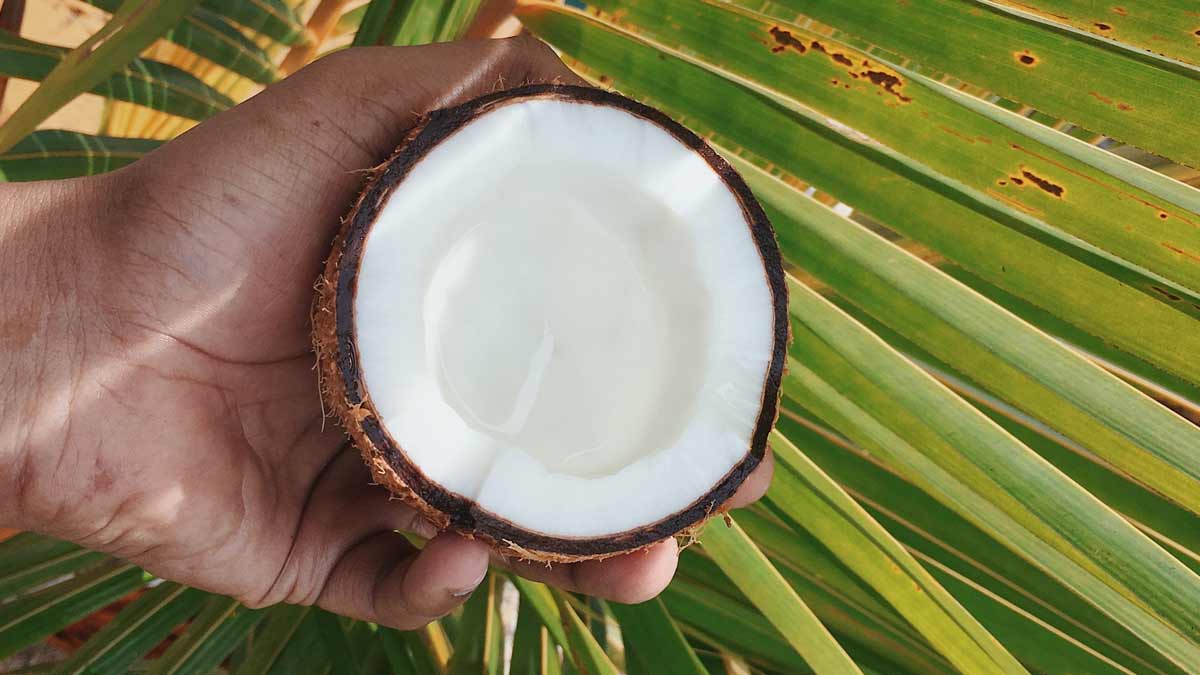
Xanthan gum
Learn all about xanthan gum, including how it's made, and why Puracy uses xanthan gum in our products.
- Derived from: corn syrup
- Pronunciation: (\ˈzan-thən-\)
- Type: Naturally-derived
What Is Xanthan gum?

Xanthan gum is a cream-colored powder derived from corn syrup.[1,2]
It is a polysaccharide, which is a type of carbohydrate made up of many sugar molecules linked together. It's produced by a bacteria called Xanthomonas campestris, which is fermented on sugar and other nutrients. Once the fermentation process is complete, the xanthan gum is extracted and dried.
It is mainly used for the following purposes and benefits:
- Thickener
It’s a very effective thickener, even when used in small amounts. This makes it ideal for a variety of food and personal care products, such as salad dressings, sauces, soups, baked goods, lotions, creams, and shampoos.
- Stabilizer
It can also be used to stabilize emulsions and suspensions, preventing ingredients from separating. This is important for the consistency of many food and personal care products.
It is gluten-free, making it a good choice for people but is not recommended for people with celiac disease or gluten intolerance. It can be used to make gluten-free baked goods, breads, and other food products. And yes, it’s vegan.
It’s generally considered safe for most people to consume and use topically.
Xanthan gum is also known as corn sugar gum and polysaccharide B 1459.
What Does Xanthan Gum Do in Our Products?

Xanthan gum is a stabilizer, thickener, binder, and skin-conditioning agent.[3] It helps ingredients stay suspended in other ingredients and is found in thousands of personal care products, including moisturizers, sunscreen, shampoo, makeup, and other items.[4] It is also common in chewing gum, salad dressing, sauces, frozen foods, toothpaste, and pasteurized process cheese spread. It dissolves in water and generally isn’t absorbed by the skin (the molecules are very large).[5]
Puracy uses xanthan gum in its line of skincare and cosmetics products, including its face and body lotion and organic baby lotion.
Why Puracy Uses Xanthan Gum

We use xanthan gum in several of our products as a stabilizer and thickener that keeps ingredients from separating. Here are a few more reasons why it’s being used:
The Cosmetics Ingredient Review has deemed the ingredient safe for use in cosmetics.[8] The FDA has deemed xanthan gum Generally Recognized as Safe, and the World Health Organization has deemed the ingredient safe for consumption.[9,10] Whole Foods has deemed the ingredient acceptable in its body care quality standards.[11] In addition, several studies show the ingredient is neither a skin or eye irritant nor a skin sensitizer.[12,13,14,15,16,17]
How Xanthan Gum Is Made

Xanthan gum production starts by fermenting corn syrup with Xanthomonas campestris bacteria.[6] The combination produces a coagulated liquid that is then separated from the rest of the fluid, rinsed, pressed, dried, and ground into a powder.[7]
Is Xanthan Gum Safe?

Yes, xanthan gum is generally considered safe for most people to consume and use topically. The Food and Drug Administration (FDA) has approved it for use as a food additive and cosmetic ingredient.
The Environmental Working Group (EWG) scores xanthan gum with a rating of 1 or not hazardous. It also scores low on common concerns like cancer, allergies and immunotoxicity, developmental and reproductive toxicity, and use restrictions.
The Panel on Food Additives and Nutrient Sources added to Food (ANS) does not find the need to provide a numerical value on the acceptable daily intake (ADI) of xanthan gum. It was found to be generally safe and tolerated from children to adults.
General Health
The ANS panel reported a safe limit of 15 milligrams per kilogram of body weight per day for xanthan gum consumption. This means that a 150-pound person could safely consume up to 2.25 grams of xanthan gum per day.
There are very few hazards associated with topical application of xanthan gum. Some people may experience mild skin irritation, but this is rare.
The most common hazard associated with ingesting xanthan gum is digestive upset. This is more likely to occur if you consume large amounts of it. Symptoms of digestive upset may include gas, bloating, diarrhea, and stomach cramps.
Environmental Impact
It is not suspected to be an environmental toxin, according to EWG.
It can be released into the environment through wastewater from food processing plants and personal care product manufacturing facilities. Another channel is through agricultural runoff from fields where it is used as a thickener for irrigation water.
Is Xanthan Gum Vegan?
The short answer is yes, usually xanthan gum is vegan. It’s produced from plant-based sugars, such as fermented corn, using a bacteria called Xanthomonas campestris.
There are other alternatives besides plant-based sucrose, but the majority is vegan-friendly.
Does Xanthan Gum Have Gluten?
Xanthan gum does not contain gluten. While it can cause symptoms that are akin to the symptoms of celiac reactions, they do not contain gluten, according to the National Celiac Association.
It is not recommended for people who have gluten sensitivity. Otherwise, it is safe to use at its recommended amount.
Common Substitutes for Xanthan Gum

There are substitutes for xanthan gum. Each has its own advantages and disadvantages:
A common substitute to xanthan gum, guar gum has similar properties and benefits. The difference is in the texture.
Locust bean gum is another polysaccharide that is similar to xanthan gum. It has similar thickening and stabilizing properties, but it can have a slightly different texture.
Psyllium husk is a soluble fiber that can be used as a thickener in food products. However, it can have a slightly gritty texture and can cause digestive upset in some people.
Arrowroot powder is a starch that can be used as a thickener in food products. However, it's not as effective as xanthan gum and can break down when heated to high temperatures.
Sources
[1] Cosmeticsinfo.org
[2] World Health Organization
[3] Cosmeticsinfo.org
[4] Environmental Working Group
[5] Cosmeticsinfo.org
[6] World Health Organization
[7] World Health Organization
[8] Personal Care Council
[9] World Health Organization
[10] Food and Drug Administration
[11] Whole Foods Market
[12] Inchem. “Xanthan Gum.” http://www.inchem.org/documents/jecfa/jecmono/v21je13.htm. 2010. Date Accessed 11- 15-2011
[13] Guillot J.P., Giauffret J.Y., Martini M.C., Gonnet J.F., and Soule G. “Safety evaluation of gums and thickeners used in cosmetic formulations.” International Journal of Cosmetic Science. 1982;4:(2):53-65
[14] Booth A.N., Hendrickson A.P., and DeEds F. “Physiologic effects of three microbial polysaccharides on rats.” Toxicology and Applied Pharmacology. 1963;5:478-484
[15] Life Science Laboratory. 1999. “Primary skin irritation study of CM-Glucan J in rabbits.” Test Code No. 99-JXA4- 1001. Unpublished data submitted by Personal Care Products Council
[16] Life Science Laboratory. 1999. “Skin sensitization study of CM-Glucan J in guinea pigs (by maximization test method).” Test Code No. 99-VIA3-1001. Unpublished data submitted by Personal Care Products Council
[17] Life Science Laboratory. 1999. “Primary skin irritation test for CM-Glucan J in human subjects by closed patch test.” Test Code No. 99-Xll-1010. Unpublished data submitted by Personal Care Products Council


























